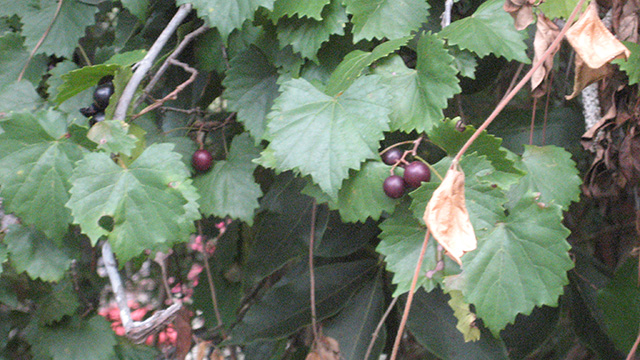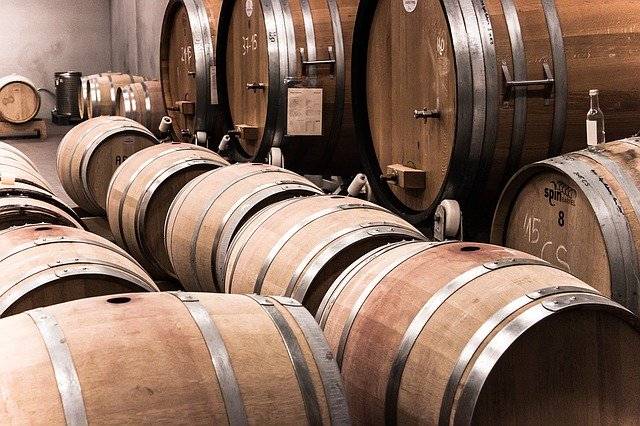Wild grapes make wonderful wines, preserves and snacks. So how do you find wild grapes? Here’s what you’re looking for when looking for this delicious fruit.
Foraging wild grapes
No matter where you live, chances are there are wild grapes. When they are ready to pick will depend on your climate. If you live in the southern half of North America, now is a great time to look for wild grapes.
Obviously, one just needs to know where to look…but, honestly, knowing to look is more important! I grew up eating wild grapes and cultivated muscadines, but I was amazed to learn that many other people know nothing or misunderstand about grapes.
You can also enjoy:
“The Grape of Youth: 11+ Anti-Aging Reasons to Love This Plant”
A few years ago, while walking the dog, I spotted a neighbor who was toiling hard in hot, humid late summer weather clearing his yard of vines. I thought he was just trying to remove some decorative hedges.
I casually commented that it was a shame to lose so many delicious grapes. He looked at me in shock, sweating, and replied, “You can’t eat those! They can be poisonous!” “No,” I told him, “they’re really good. You can just eat them and make jellies, wine or Grape husk preserves. They’re better than most grapes you buy in the store.” “But,” he protested, “how do you know they’re not poisonous?” Well, that’s hard to answer: “Because, they’re grapes!”
“My God, there are grapes everywhere!”
How to explain that grapes are grapes? Grapes are one of the most delicious, widely cultivated and oldest fruits in existence. It’s hard to understand how humans got to a point where the average person might not recognize one of the most ubiquitous and acclaimed edible plants in human history.
But, again today, while I was taking pictures of Nodo, a man stopped and asked me what I was doing. He owns the property next door and is friendly. I told him I was writing an article about finding wild grapes. “I didn’t know there were grapes here,” he said. “Where are they?” I pointed to the top of his head. Soon, he exclaimed: “Is that a grape? Holy cow, there are grapes everywhere!”
Indeed there is.
One just has to look for them. Amazingly, he lived under wild vines for 20 years without ever seeing them.
These are the grapes on his head – can you see them?
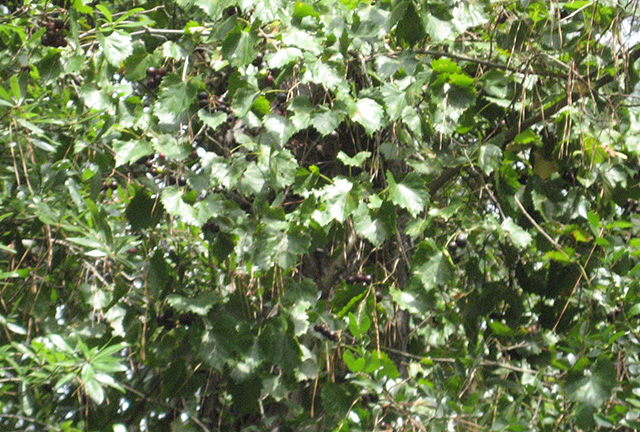
Granted, they’re fairly small and don’t grow in large clusters like European vines. However, the wild grape is still a moderately sized fruit.
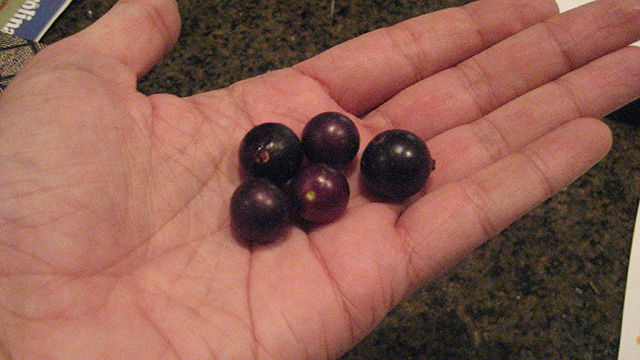
How to find wild grapes
Vines are usually grown on the edges of understory, wooded or dense areas. So, when looking for grapes, look up about 10 feet.
They grow in bamboo bushes 6 to 10 feet above the ground:
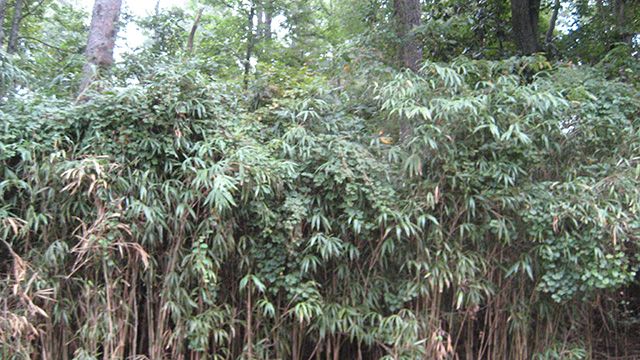
Others are as high as 20 feet – these are on pecan trees:
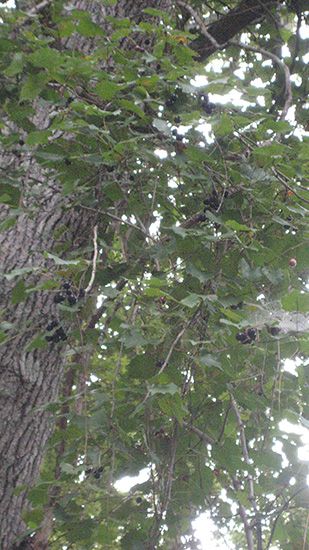
It pays to use a ladder to pick these, as enough gallons of wine can be collected quickly. The vines are located on the lower limbs, close to the trunk. Pecans also seem to be in abundance this year, so I’ll be returning to these trees later this fall.
Be sure to look down, too!
Perhaps the surest way to find wild grapes growing out of normal field of view is to look at the ground. Birds, raccoons, and possums also love to eat wild grapes, and make a mess!
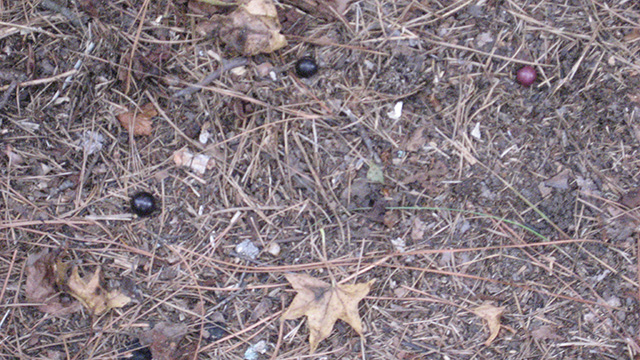
Another benefit of finding grapes in the ground is finding late summer mushrooms. I found this a few days late with no harvest, but I’ll know where to look next time!
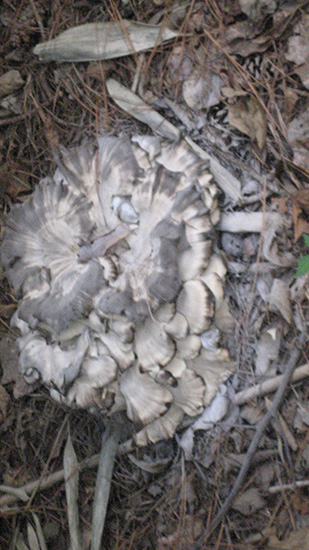
poisonous like wild grapes
The obvious question is, do wild grapes have a poisonous appearance? Really, there’s only one — and I’ve never seen it growing near the Carolinas. If Canadian Moonseed is growing where you live, you will need to be able to identify it. Seeds are a very unique shape, completely different from grape seeds.learn more here and here.
Historical uses of wild grapes
The grapes I’m harvesting are a variety of muscadines. Muscat grapes have a long history in the Carolinas and Virginia. The “Mother Vine” in Duplin County is believed to be the oldest cultivated vine in North America, possibly dating back to an expedition by Sir Walter Raleigh in 1584.
After the Civil War, the muscadine grape and its lighter-skinned variety scuppernong became a large agricultural enterprise in North Carolina. A small community called Vineland grew up around grape culture and transported those grapes across the country by railcar. These grapes are mainly used for winemaking. Prohibition and the Prohibition Movement ended the business, and the town no longer exists (it was incorporated into Whiteville, North Carolina).
It’s odd that our wild grapes were once so commonly used in winemaking that few people realize that you can still make great wine from wild grapes. Although I hate to mention his name, one of America’s leading writers and bloggers on foraging and wild food is blunt about making good wine from wild grapes.
I insist that any fault lies with the winemaker and not the wine. I agree that many commercial muscadines are too sweet. However, winemakers can greatly influence wine by fermenting the juice on or on the grape skins, controlling sweetness and acidity, yeast selection, the temperature at which the wine is fermented, and more.
My grandfather made a wonderful, dry but slightly sweet Madeira style wine from his muscadines – but table wines can be red or white, dry or sweet, or somewhere in between Between the two…very much to your taste.
You can also enjoy:
“Organic wine that actually tastes good!”
If you are interested in this topic, be sure to check out this book “The Foundation of American Grape Culture”— Published by horticulturalist Thomas Volney Munson (DSc) in 1909. In it, Munson lists dozens of American grape varieties and details their characteristics. Missouri’s Vox Vineyards produces award-winning wines based on approximately 27 native grape varieties pioneered by Munson – proving that it is indeed possible to make great wine from wild grapes.
Recipe: Candied Grape Husks
Foraging for wild grapes is a great opportunity to get out in the woods. It can be a good hobby to learn about the grapes grown in your area and how to best use them. In the Carolinas, it’s also a great time to scout for wildlife, pick mushrooms, and find herbs. Not only is it inspiring to know your small area and the plants that grow there…it’s delicious, as evidenced by this old family recipe!
grape husk preserves
1 pound muscadine grapes
1 pound sugar
1 teaspoon lemon juice
Cut the grapes in half and remove the seeds.
Cook deseeded grapes in sugar, stirring until husks are tender (about 15 minutes). You can add a little water if necessary.
Add lemon juice to taste.
Pack into hot jars and seal (or store in refrigerator).
Enjoy hot, buttered homemade cookies and enjoy!
doing what you think?
If you’re looking for food for these sweet treats, how do you find wild grapes? What’s your favorite way to use it? Let me know in the comments below!
_________________
Shhh! Our attorneys want you to read this big, bad medical disclaimer –> The content in this article is provided through The Grow Network (TGN) for informational purposes only and does not constitute medical advice; it is not intended to be a substitute for professional medical advice, diagnosis or treatment. If you have any questions about a medical condition, always seek the advice of a qualified healthcare provider. If you think you may have any medical condition, you should seek medical attention immediately. You should not delay seeking medical advice, disregard medical advice, or stop medical treatment because of information provided by TGN. Reliance on any information provided herein is at your own risk. And, of course, never eat wild plants without first consulting a local expert.
Grow Network is a participant in the Amazon Services LLC Associates Program, which is designed to give our team a way to earn money for recommending our favorite products! If you purchase an item after clicking one of our links, we may earn a small commission at no additional cost to you. Thank you for your support of TGN!
(1,269 visits, 6 visits today)

Judson Carroll grew up in the mountains and coastal swamps of North Carolina, on the family farm before the founding of the Americas. Although he holds a certificate in permaculture design, most of what he knows about permaculture and gardening is from his grandfather and great-grandfather, who had a permaculture before “permaculture” became a term. Continued agricultural homesteads and “food forests”. Judson learned to cook from his mother and grandmother, the ladies who can best be described as profound. He spent most of his life in the woods or on the water and strived to be the kind of old-fashioned traditional southern gentleman that his ancestors could be proud of.

